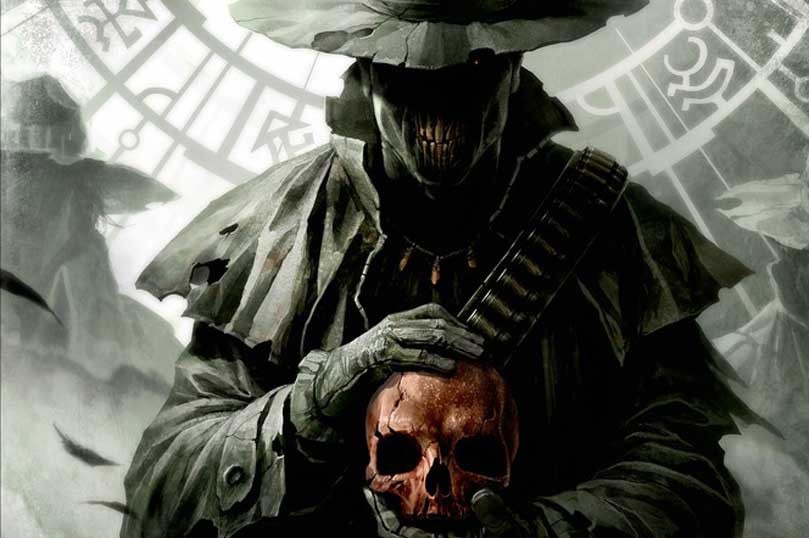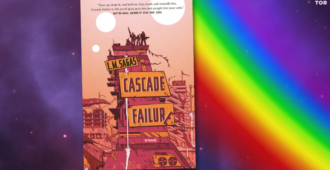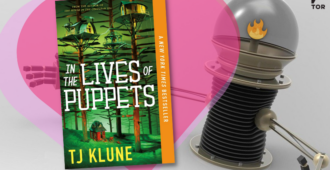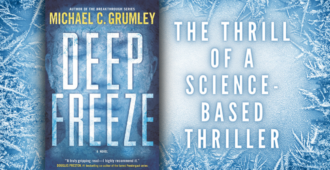Like the song goes, “My heroes have always been cowboys.” But another archetypal American figure plays a pretty big role in my new novel, The Shotgun Arcana: the serial killer. In the novel, I had the perverse pleasure of getting to play around with a literal army of psycho-killers—a cult of murders and cannibals, called the Teeth of Cain.
I looked into some bloody back alleys of America’s history to see what kind of real-world serial killers I could use for inspiration. As usual, history didn’t disappoint.
There’s the “Servant Girl Annihilator”, or the Austin Axe murderer, if you prefer. He was active in Austin Texas from 1884 to 1885, three years prior to the Jack the Ripper Murders in London. He was never caught and there are some serial killer experts (yes, there are such folk) who make a case that the Annihilator may also be the Whitechapel Ripper, traveling the world perfecting his bloody craft.
There are the Harpe Brothers, 18th century mountain men who killed for pleasure, or at the slightest provocation, even murdering a baby for crying too much. Many historians consider the “bloody Harpes” America’s first serial killers. The brutal pair were the inspiration for characters in Lois McMaster Bujold’s novel, The Sharing Knife: Passages and are featured in Manly Wade Wellman’s novel, The Voice of the Mountain.
Queho, a member of the Paiute tribe, who is considered Nevada’s first serial killer, eluded authorities for decades. Queho had Native American and Caucasion victims and took trophies from some of his kills, wearing the badge, number 896, that he took from the chest of a deputy he killed. The badge was found pinned to Queho’s mummified corpse when miners discovered his body in a cave in 1940, bringing the 30-years manhunt for him to a close.
John Johnston, better known as “Liver-eatin’ Johnston” was a mountain man who pursued a vendetta for over 25 years against the Crow Nation for the murder of his wife and child. Johnston lived up to his nickname, eating the livers of his victims—a grave insult to the Crow, who believe that the liver is necessary for the transition to the afterlife. The Crow hunted him for years and sent war parties to kill Johnston, calling him, Dapiek Absaroka (“Killer of Crows”). The folklore around Johnston claims he murdered and scalped over 300 Crow warriors. The number is considered by many historians to be inflated.
The Bender Family is another example of American history and mythology blurring. The Benders were German immigrant saloon-keepers in Kansas who routinely murdered their patrons and buried them in the garden behind the establishment. A guest for the night would be wined, dined, and entertained…and then usually dispatched by the eldest son with a sledge hammer. If that proved ineffective, the stunned victim was pulled through a hidden trap door in the saloon floor and their throat slit by the Benders’ daughter, Kate—a self-described psychic. The whole clan vanished before they could be caught—becoming part of western folklore, maybe even shaping urban legend.
Some of these historic killers appear in The Shotgun Arcana to make trouble for my dysfunctional little family of anti-heroes. They have different names and back stories, but they are based on real people, well, real legends, anyway. There are quite a few more salty dogs I didn’t even have a chance to elaborate on. I leave it to the diligent reader, and scholar of disturbing history, to sort the bettermost from the balderdash. Have fun.
…………………………
From the Tor/Forge October newsletter. Sign up to receive our newsletter via email.
…………………………
More from the October Tor/Forge newsletter:







